Going into The Longest Five Minutes, I was expecting your typical lengthy and grind-heavy RPG experience. My only real knowledge of this game was with its form of storytelling. You start off at final boss fight of the game and the main hero has forgotten his memories of the journey to that fight. So the story is told through a series of flashbacks in order to piece together the events that occurred. The concept of telling a story through the past has been seen before, but I think the way that The Longest Five Minutes sets itself apart is by not only having that five minute clock to let you know how far into the overall game you are, but also how they present the story. There are also other things I will get into like the presentation and mechanics of the game. I will say this first though, I came into this game not knowing that much about it. After completing it, I was pleasantly surprised by it and I can safely say it’s probably one of the most enjoyable games I’ve played so far this year.
Like I mentioned, The Longest Five Minutes revolves around the final boss fight of the game. As you can tell by the game’s name, it’s all about the five minutes that occur in this fight. Starting with the beginning seconds where the main character has no idea what is going on and soon realizes that he has forgotten almost everything that has happened leading up to this final fight. Aware of the situation, his party members help buy him time in order to recall past memories. You are then presented with a flashback of the start of your journey.
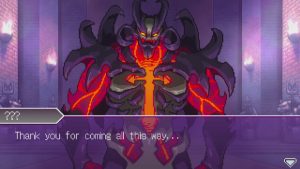
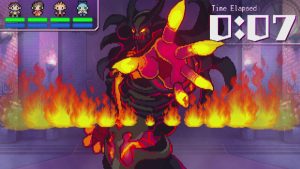
THE GOOD: This style of storytelling where you’re further progressing into the five minutes of this final boss fight and recalling past memories in order to help piece the story together is the main concept of The Longest Five Minutes. Telling a story in this manner has been done before in some form, but for The Longest Five Minutes, it does unique things with this style. One of the main differences is that it doesn’t always follow a straight line. You’re not recalling a past memory and then jumping back to the present, and then back to continuing where you left off in the past. There will be moments where you’ll jump from a memory near the beginning of your journey, to then something more recent. Since you’re a hero who is trying to remember things, the memories you’ll find yourself in will be relevant to what is playing out in those five minutes.
The most interesting thing that occurs with the storytelling though is how this affects the RPG elements of the game. This is an RPG after all, but the concept of jumping around in time can be a weird thing if you’re talking progress in a RPG. The way this is all presented in TLFM is by presenting the levels of your party as a way to tell the time each story event occurs. For example, the memory of when your party departs the starting town, you’re all at level 5. With more recent memories having a higher level tied to them. It’s a neat detail that gives off that feel of you playing an RPG.
The reason I mention that this feels like an RPG is because, while the elements of your traditional RPG are there, with random enemy encounters and turn-based combat. The progression and grind that you would normally see in an RPG are where things get different. With the level of your party jumping around based on where the story is at, it can feel weird to even bother with fighting enemies if the experience you earn during those fights doesn’t carry over. So the way the game maintains that progression is by having a “reexperience” level, which is a level that you build up that is separate from the levels you see in the memories. This separate level is then applied on top of what your current level is, so if you choose to engage in multiple fights or completing the various side quests, the experience you earn from those will at least help, even when the level of your party increases or lowers as you jump memories.
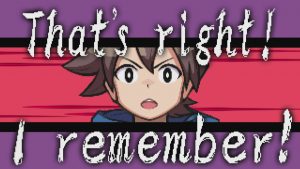
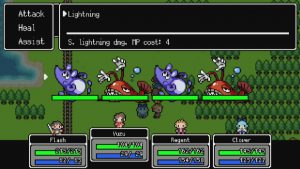
As you can see, things don’t normally play out like your typical RPG and that’s what kind of makes TLFM an appealing concept. Especially for those who love the story of RPGs, but not necessarily the massive grinding involved with it. The RPG elements found in this game are fairly light. The battling is simple and the overall difficulty doesn’t require massive grinding. You could probably travel straight to the boss you need to face and make it out okay without needing to battle any small monsters for that extra experience. Sure, the battling and traveling is still quite lengthy, but as an adventure RPG title, this feels more on the adventure side than it does for RPG. Less time needed to grind out monsters and more time enjoying the story being played out and getting to know the characters you meet along the way.
Because the RPG aspects felt relaxing to go through without much stress involved with the grind, it was easy to stay invested in the story. Another reason why it was easy to stay invested is because I found the story to be quite good. Unfortunately it’s dialogue only with no voice overs, but I still found it an enjoyable read. Parts of it do feel like typical RPG tropes, but there is a lot of development with the characters in your party, and other supporting characters you meet on your journey. There’s also some interesting twists that get presented thanks to the memory loss concept. You’ll also be faced with some choices to make that will affect the direction the story goes. Not to the point of having many multiple endings (though there is a couple), but there will be some memories you won’t even come across based on the choices you make. There is a chapter and memory select though that you can replay through if you wish to see what path the other choices lead.
Along with the story, the other part I most enjoyed was the overall presentation of the game. The pixel style gives off that old-school vibe, but it’s also pleasant to look at and the characters can actually be quite expressive. Accompanying that is a pretty amazing soundtrack. Parts of it feel well in line with the retro look, but there also tracks that are more on the modern side of things. Music that feels upbeat to sad to fast-paced battle music. The music always manages to fit in with the moments of the game perfectly that it helps these moments stand out more and draw you into the world. Certainly some of the most memorable tracks I’ve heard this year so far.
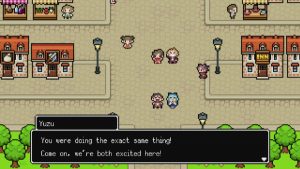

THE BAD: There is much to this game that I loved, but I also feel that a couple parts of it could’ve been better. One of which is with the RPG aspects. Like I said, battles feel quite easy and grinding isn’t really something required for you to move on with the story. This can be good for those who don’t like grinding, but there is still quite a bit of fighting involved in this game. The encounters occur randomly, so it can be a bit annoying to engage in a battle when you’re trying to go around solving a puzzle or making your way out of a maze. This annoyance is also more noticeable because the battles aren’t really important in the grand scheme of things, other than boss fights. Yes, they’re easy, but they’re also distractions. It’s just so basic in it’s design and so needless that in battles I was just pushing the A-button as fast as I could to get my attacks in as quickly as possible to just end the fight. There is a Repel spell you can cast that will halt encounters for a short time, which is nice. You don’t have to grind, but you still invest a lot of time battling enemies before reaching the big story moments. I just feel like they should’ve gone more in the direction of simplifying things if they really wanted to present an RPG-like adventure without the dragging feeling the grind can have.
The outside of story moments feel even more needless thanks to many parts not carrying over from memory to memory. While your experience gets carried over in some form, other management items like money and equipment will not carry over. This means that at the start of every memory, you’ll begin with a set amount of money and equipment for your party. You can still earn more money through battles and new equipment by finding chests scattered throughout. Just takes getting used to the idea of freely spending your money on items and equipment without worrying about saving stuff for later, cause it all resets to something else when you go to a new memory. It does make sense with how the story is presented, but I can’ help but feel like much of the stuff in between story moments is unnecessary. It is there to give off that RPG feel, but it would’ve been great if some effort were made to change things up instead of keeping things simple. I will admit though that not having to fully manage those things is one way of simplifying the RPG process.
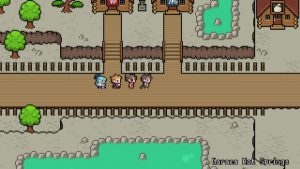
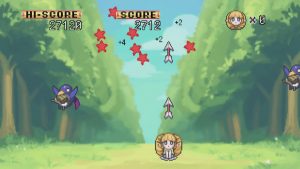
OVERALL THOUGHTS: Even if the in-between stuff felt needless, parts of me still enjoyed the journey. It helped that each memory had their own side-objectives to fulfill, so you had some goals to aim for. Also, each memory felt like their own thing and presented their own challenges, that while battling felt unnecessary, things never felt too repetitive. Each memory felt like their own self-contained adventure.
The Longest Five Minutes has a unique way of telling its story and it does several interesting things with it too. Parts could’ve been better, but I do still feel like this game is nice for those who enjoy the stories of RPGs, but not so much the grinding of them. And I found the story in TLFM to be quite enjoyable. I was surprised at how well it presented itself with its look and music, that they greatly played a part in making lots of moments stand out and really drawing you in. This was a solid 15-hour adventure for me and there were still several memories that I’ve never got to see and thanks to how short of an experience this was, I’m quite motivated to replay things differently to see where they go.
Beating an RPG is always satisfying to me cause it’s a long journey. The Longest Five Minutes still managed to capture that feeling in me without the need to invest 80-100+ hours, so it certainly accomplished some of the goals it had in mind. This is also a budget-priced title at $39.99 on Nintendo Switch, and also available on Vita and Steam. The memory to memory aspect is also nice for handheld play since memories can last from a few minutes to an hour or more. So it’s easy to jump in and out of. So I highly recommend it for those on Switch and Vita. This was a nice surprise for me and definitely one of my favorite games of the year so far.
*This review is based on the Nintendo Switch version of the game, which was provided digitally by NIS America.

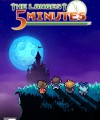












You must be logged in to post a comment.